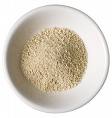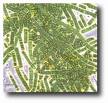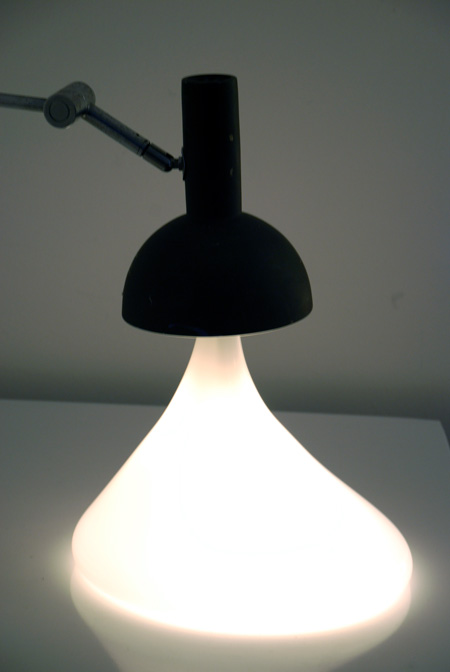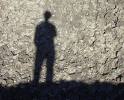How Do We See Things And Micro-organisms
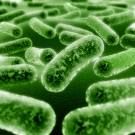
THIS IS GOOD AND EXCITING.
GIVES YOU KNOWLEDGE.
- 1.
Micro-organisms are also called?
- A.
Bugs
- B.
Microbes
- C.
Tuna
- D.
Parasitic
- E.
Organisms
Correct Answer
B. MicrobesExplanation
Micro-organisms are commonly referred to as microbes. This term encompasses a wide range of microscopic organisms such as bacteria, viruses, fungi, and protozoa. These organisms are too small to be seen with the naked eye but play significant roles in various ecological processes, including decomposition, nutrient cycling, and disease. The term "bugs" is often used informally to refer to insects, while "tuna" is a type of fish and "parasitic" describes organisms that live off and harm other organisms. Therefore, the correct answer is microbes.Rate this question:
-
- 2.
Who observed misro-organisms first?
- A.
Anthony ven leowenheok
- B.
Louis Pasteur
- C.
Solar van leeuwenko
- D.
Anthony van Leeuwenhoek
- E.
Marie curie
Correct Answer
D. Anthony van LeeuwenhoekExplanation
Anthony van Leeuwenhoek is credited with being the first person to observe microorganisms. He was a Dutch scientist who developed the first microscope capable of observing these tiny organisms. Through his observations, he discovered and described various microorganisms, including bacteria, protozoa, and sperm cells. His work laid the foundation for the field of microbiology and greatly contributed to our understanding of the microbial world.Rate this question:
-
- 3.
Yeast is a type of a?
- A.
Bacteria
- B.
Fungi
- C.
Parasitic
- D.
Virus
- E.
Infection
Correct Answer
B. FungiExplanation
Yeast is classified as a fungi because it is a single-celled organism that reproduces through budding or fission. Fungi are a diverse group of organisms that can be found in various habitats, including soil, water, and plants. They play important roles in decomposition and nutrient cycling. Yeast is commonly used in baking and brewing due to its ability to ferment sugar and produce carbon dioxide and alcohol.Rate this question:
-
- 4.
Which of the following is the pond water misro-organisms?
- A.
Anopheles
- B.
Staphylococcus aureus bacteria
- C.
Paramecium
- D.
Tobacco mosaic
- E.
E.coli bacteria
Correct Answer
C. ParameciumExplanation
Paramecium is a correct answer because it is a common microorganism found in pond water. It is a single-celled organism that belongs to the group of ciliates and is characterized by its slipper-like shape and the presence of cilia on its surface. Paramecium is a heterotroph, meaning it feeds on other microorganisms and organic matter in the water. It is an important part of the pond ecosystem and plays a role in nutrient cycling.Rate this question:
-
- 5.
Which of the following bacteria makes its own food?
- A.
Rotifer
- B.
E.coli bacteria
- C.
Shamson-co-bacteria
- D.
Salmonella bacteria
- E.
Cayanobacteria
Correct Answer
E. CayanobacteriaExplanation
Cyanobacteria is the correct answer because it is a type of bacteria that is capable of photosynthesis, meaning it can produce its own food using sunlight as an energy source. This process is similar to how plants make their own food through photosynthesis. Cyanobacteria are known for their ability to convert sunlight, water, and carbon dioxide into carbohydrates and oxygen, making them self-sufficient in terms of food production.Rate this question:
-
- 6.
Which of the following disease is caused by bacteria?
- A.
Whooping cough
- B.
AIDS
- C.
Hepatitis
- D.
Common cold
- E.
Dengue fever
Correct Answer
A. Whooping coughExplanation
Whooping cough is caused by the bacteria Bordetella pertussis. It is a highly contagious respiratory infection that affects the airways and causes severe coughing fits. The bacteria is spread through respiratory droplets when an infected person coughs or sneezes. Symptoms of whooping cough include a persistent cough, runny nose, fever, and difficulty breathing. It can be particularly dangerous for infants and young children, and vaccination is recommended to prevent the disease.Rate this question:
-
- 7.
Light is a form of?
- A.
Appearing bright
- B.
Energy
- C.
Sense organ
- D.
Power circuit
- E.
Source
Correct Answer
B. EnergyExplanation
Light is a form of energy. It is a type of electromagnetic radiation that carries energy and enables us to see. When light interacts with matter, it can be absorbed, reflected, or refracted, demonstrating its ability to transfer energy. This energy is essential for various processes in the natural world, such as photosynthesis in plants and vision in animals. Therefore, the correct answer is energy.Rate this question:
-
- 8.
What is the thing which enables us to see?
- A.
Eyes
- B.
Reflection
- C.
Light
- D.
Sense organs
- E.
Energy/raise
Correct Answer
C. LightExplanation
Light enables us to see because it is the electromagnetic radiation that our eyes can detect. When light enters our eyes, it is focused onto the retina, which contains light-sensitive cells called rods and cones. These cells convert the light into electrical signals that are sent to the brain through the optic nerve. The brain then processes these signals, allowing us to perceive and interpret the visual information. Without light, our eyes would not be able to detect any visual stimuli, and therefore, we would not be able to see.Rate this question:
-
- 9.
Which of the following is not a light source?
- A.
Lightning
- B.
Stars
- C.
Sun
- D.
Moon
- E.
Burning candle
Correct Answer
D. MoonExplanation
The moon is not a light source because it does not produce its own light. Instead, it reflects light from the sun. The other options listed (lightning, stars, sun, and burning candle) are all sources of light that emit their own illumination.Rate this question:
-
- 10.
A shadow is an area of darkness formed when............?
- A.
Light is completely or partially blocked by an object.
- B.
Light is not getting place to go through.
- C.
Light is bounced back to a person or an object.
- D.
Light is completely trap by a person.
- E.
Shape gets into the way of light.
Correct Answer
A. Light is completely or partially blocked by an object.Explanation
A shadow is formed when light is completely or partially blocked by an object. When an object is placed in the path of light, it prevents the light from reaching certain areas, creating a shadow. The shadow appears as a dark area because the light is unable to pass through the object, resulting in a lack of illumination in that particular region.Rate this question:
-
Quiz Review Timeline +
Our quizzes are rigorously reviewed, monitored and continuously updated by our expert board to maintain accuracy, relevance, and timeliness.
-
Current Version
-
Mar 20, 2023Quiz Edited by
ProProfs Editorial Team -
Mar 23, 2010Quiz Created by
Ayesha Faiz
 Back to top
Back to top




